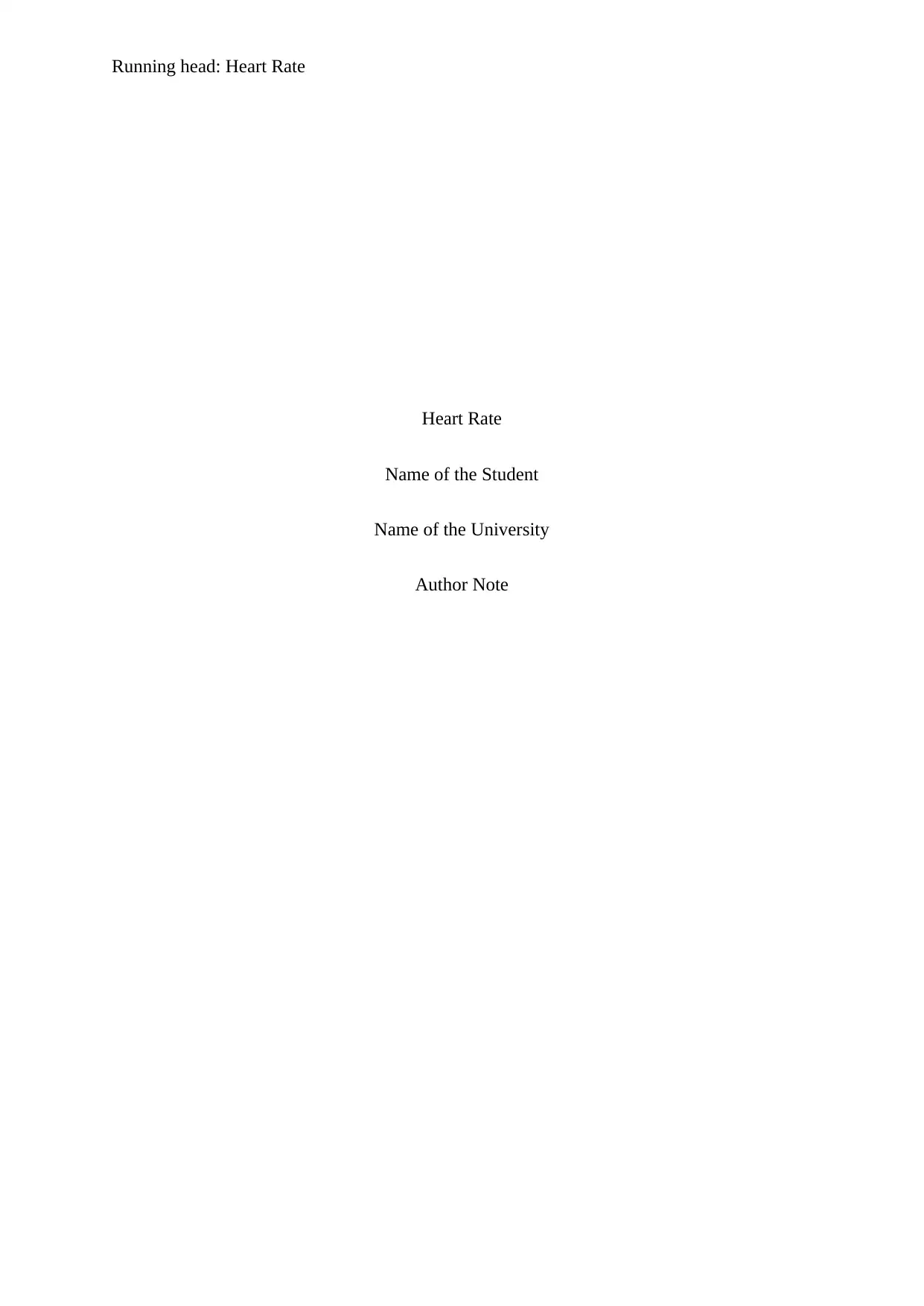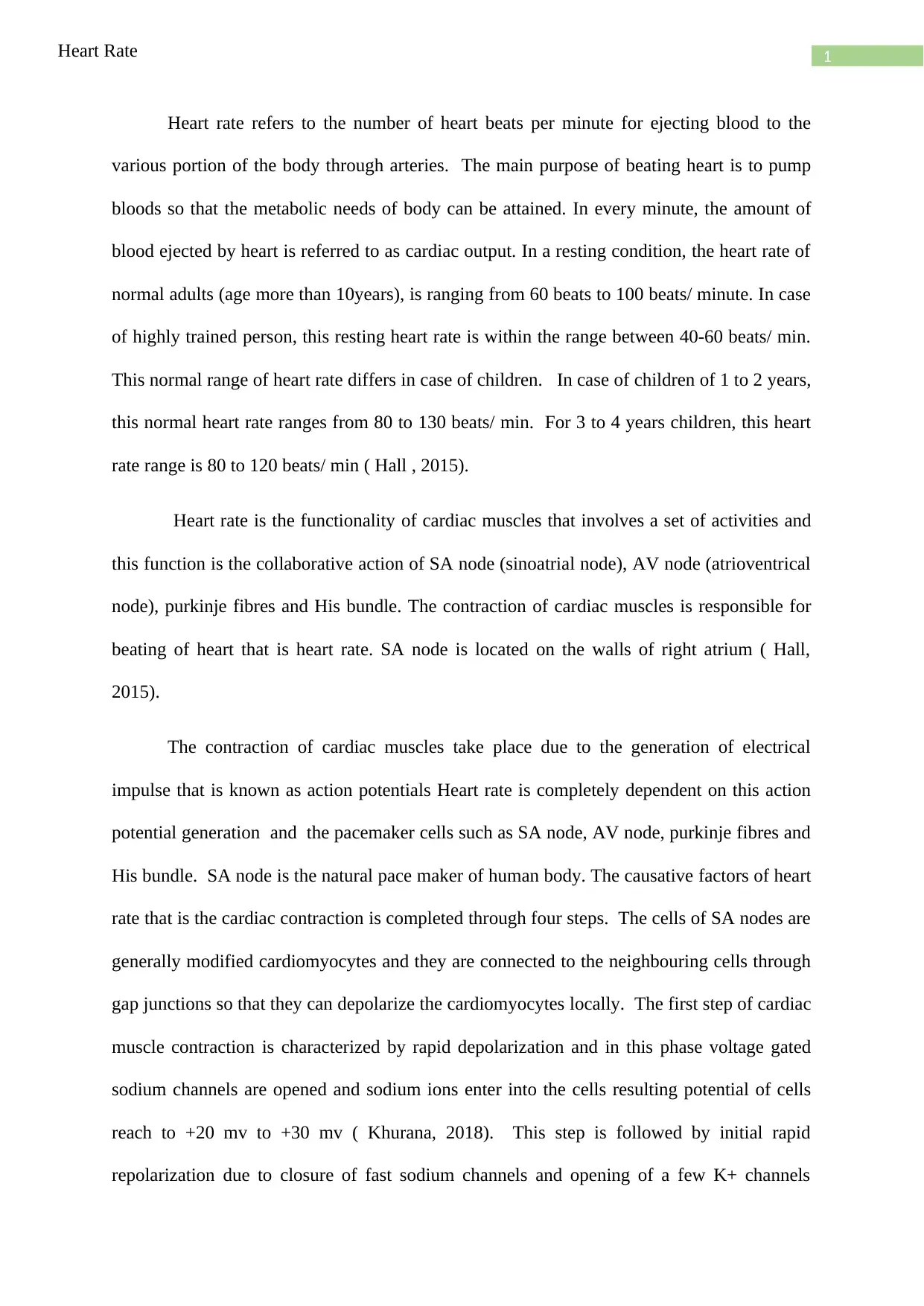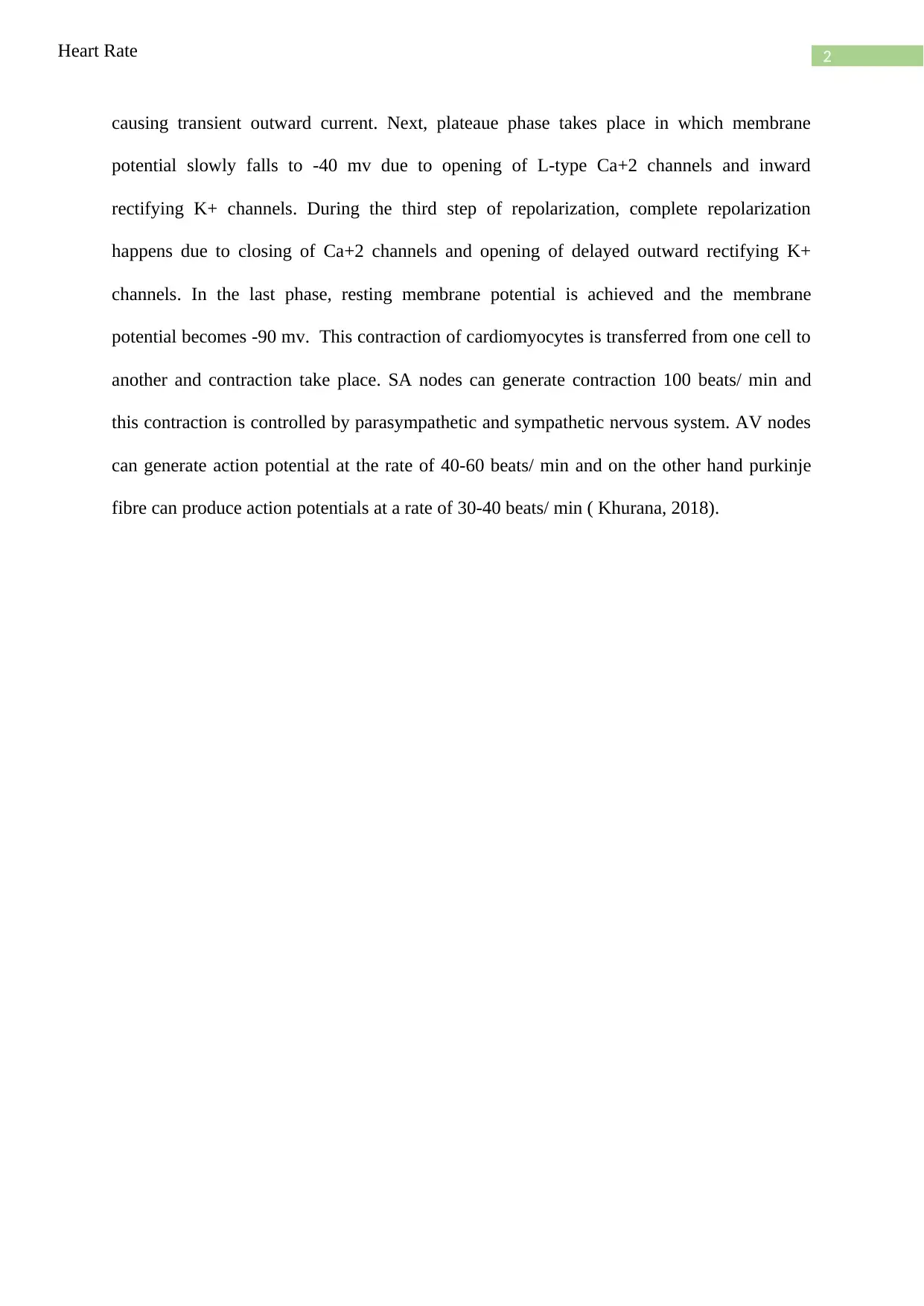Heart Rate Report: Physiology and Cardiac Contraction
VerifiedAdded on 2023/03/17
|5
|636
|30
Report
AI Summary
This report explores the concept of heart rate, explaining its significance as the number of heart beats per minute and its importance in pumping blood to meet the body's metabolic needs. It details the normal heart rate ranges for adults and children, and highlights the role of the SA node, AV node, Purkinje fibers, and His bundle in cardiac muscle contraction. The report further outlines the four steps involved in cardiac muscle contraction: rapid depolarization, initial rapid repolarization, the plateau phase, and complete repolarization. It describes how the SA node acts as the natural pacemaker, generating contractions at a rate of 100 beats/min, and how the AV node and Purkinje fibers also contribute to action potential generation. The contraction of cardiomyocytes is discussed in detail, along with the influence of the parasympathetic and sympathetic nervous systems on heart rate regulation. The report concludes by referencing sources that support the information provided.
1 out of 5











![[object Object]](/_next/static/media/star-bottom.7253800d.svg)